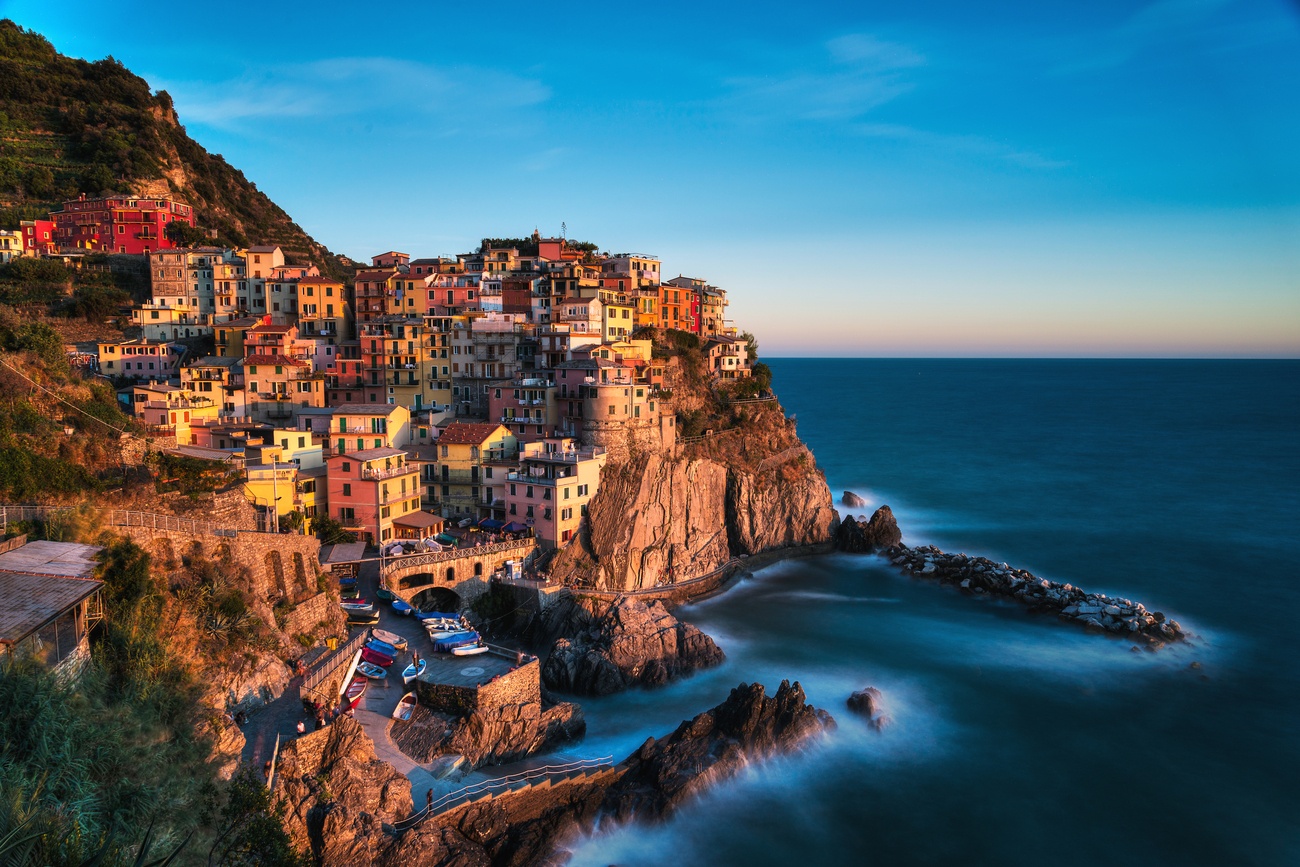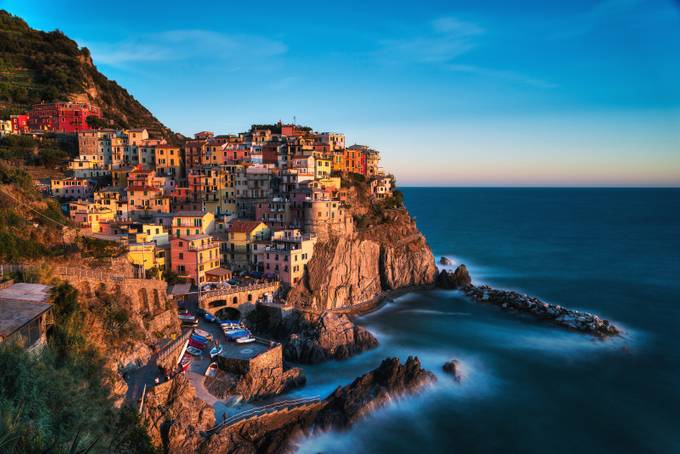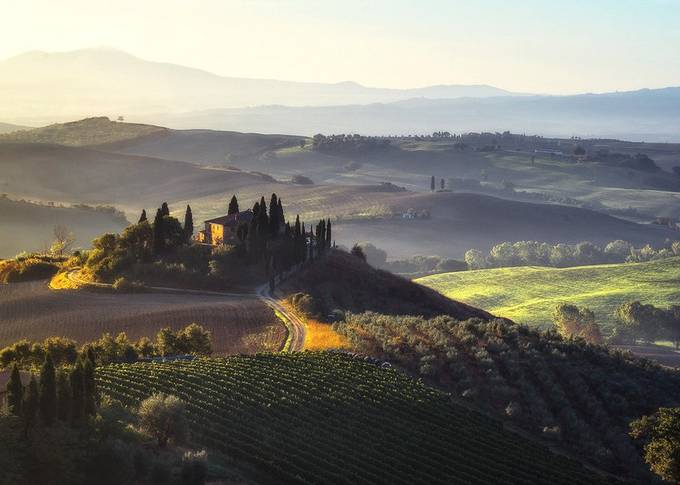Meet ViewBug community member maxfoster. Max shares 3 awesome tips, explains some mistakes you should avoid as a photographer and shares very interesting insights into his photography. Enjoy our conversation!
What inspired you to be a photographer?
Growing up, I always enjoyed the photography of National Geographic and other travel magazines. When I first started traveling, I only had a cheap point and shoot camera and knew very little about photographic techniques. On my first trip to Italy, I took hundreds of photos. When I returned home and reviewed the photos, I was extremely disappointed by the poor quality of the images. I realized the images didn’t properly capture the beauty and intricacy that I had seen in person. In 2013, I purchased my first interchangeable lens camera and dedicated myself to learning about exposure, composition and what I liked/disliked in photos. I also discovered many online photography sites, such as Viewbug, which greatly inspired me to hone my craft. After seeing the work of today’s top landscape photographers, I knew I wanted to pursue photography and produce my own high quality imagery.
What was your first camera and what do you shoot with today?
My first real camera was a Sony NEX-5 with the 18-55mm kit lens. This was a great camera to learn with, but it certainly had its limitations in regard to low light performance, resolution and lens selection. I now use a Nikon D610 for my main camera. The image quality is astounding, and it is very durable.
When someone looks at your photos, what do you want them to take away from them?
I specialize in landscape and travel photography from around the world. When someone looks at my work, I want the images to transport them to a place they’ve previously been or inspire them to go see these places for themselves.
What is it that you love about photography?
I love capturing the world’s beauty, whether that is manmade or natural. There are infinite possibilities in photography, and I enjoy that freedom. Even when visiting areas that are photographed around the clock, it is always possible to come away with a fresh perspective. Additionally, photography has allowed me to connect with people from around the world. I have made new friends along the way and I know I have photography to thank for that.
What has photography done for you?
Photography has provided me with a creative outlet that compliments my passion for world travel. It has also increased my appreciation for the beauty of our planet. When you see the world through a photographer’s lens, you tend to slow down, notice the details and let it all soak in. In today’s fast paced world, this is a welcomed respite.
Do you try to be conceptual or do you prefer to show the feeling behind a photo?
I try not to box myself into specific concepts prior to a shoot. I do extensive research and planning before trips, but am also quite flexible. The weather and light are infinitely varying, so being on a limited schedule you have to work with what Mother Nature gives you. With that in mind, I tend to observe the location when I arrive (typically with time to spare before sunrise/sunset) and decide how to proceed. If the light is flat, but there are fast moving clouds I may shoot a long exposure to emphasize this. Or if there are some unique foreground elements that I was not expecting, I may incorporate them into the scene. I try not to force a feeling or concept, but rather let the scene speak for itself at that particular time.
How do you describe your style?
When I first became involved in photography, I shot far too many frames. I would go out for a sunset shoot thinking that I had to get as many different comps and locations as possible, which resulted in rushed compositions and poor quality. I now focus on quality over quantity and am more than satisfied coming away with one solid shot from a location. I have spent a lot of time over the past two years enhancing my post processing workflow. My goal with this is to produce high quality, hand finished post production that complements my photos. I look at the RAW photo and imagine what I want the end image to look like. I ask myself how I can accentuate the features of the landscape in post, yet remain true to the base image. It took me a long time to realize that less is often more. With that being said, I like shooting colorful landscapes and cityscapes and conveying their natural beauty with my own artistic touches.
If you had to choose one lens which one would it be and why?
I would pick the Nikon 16-35mm f4. This is an excellent lens for landscape photography due to its extremely wide 16mm end, and it also provides a lot of value. The 16-35 zoom range is adequate for many landscape scenes, and I find myself not switching lenses very often.
What are your 3 tips for others who want to become better photographers?
1. Focus on quality over quantity. You don’t need to document every leaf or building, and no one wants to see all that anyway. Be patient, wait for good light and focus on nailing your compositions. Slight changes of composition can have dramatic effects on images.
2. Taking the actual photo is only half the battle. Spend time learning how to post process by hand, rather than relying on automated filters and actions. The filters may be quick and easy, but will prevent you from developing your own personal style.
3. Don’t worry about what kind of gear you have; you can make beautiful photos with almost any level of equipment. Too many people focus on purely the technical specs and the latest equipment; spend more time on your personal skills and you will see much better results.
Have you received negative feedback from your work?
Early on I received comments regarding the post processing of my photos. Many people said it was too HDR or color saturated. I then focused on learning how to enhance images with subtle techniques rather than quick and easy filters and actions. I still welcome constructive criticism that is well intentioned. It may be difficult to receive criticism, but it will help you become a stronger photographer.
Where did you learn to take photos?
Starting out, I purchased several photography instructional books. I wanted to master exposure and camera techniques first, so I wasn’t scrambling in the field trying to figure out settings. Bryan Peterson’s “Understanding Exposure” was great for learning the technical side of photography. For creative inspiration, I read books by Ansel Adams, Galen Rowell and Art Wolfe. I continually study the work of other top photographers to learn what works, what doesn’t and why. Clicking the shutter is only a small part of the equation.
Raw vs jpg and why?
For landscape and travel photography, it is essential to shoot in RAW format. RAW files contain much more data than compressed .jpgs and allow you to pull out all the detail in the scene. You can often bring details back from blown highlights or crushed shadows. If you are shooting with a high end camera and don’t shoot RAW, you are really missing out on much of the camera’s imaging capabilities.
What do you carry in your camera bag?
• Nikon D610
• I have a pretty typical selection of lenses for landscape photography, including:
• Rokinon 14mm f2.8
• Nikon 16-35mm f4
• Nikon 24-85mm f3.5-5.6
• Nikon 70-200mm f2.8
• Really Right Stuff TVC-34L tripod and BH-55 PCLR ball head
• Lens cloths
• Rocket blower for cleaning debris from camera gear
• Several batteries
• Lee 4” filter system with a 10 stop ND filter and circular polarizer filter
• Sensor Gel Stick for cleaning my camera sensor
• Headlamp for nighttime hiking & photography
If you could have the gift of a great photographer who would it be and why?
Marc Adamus greatly inspires me. He searches for new locations that have yet to be photographed, and uses his advanced meteorological knowledge to find the best conditions for light and weather. His work continues to advance the entire field and offers inspiration to everyone from beginners to seasoned pros. I would like to continue to improve my skills and travel to some of the remote locations Marc frequents. If you haven’t seen his work, definitely check it out!
What is the most common mistake you see people making when shooting these days?
Packing up too early! When I am shooting around sunset, I stay until the sky is almost completely dark. Cameras sensors these days allow you to shoot in twilight and night conditions with great results. I often see people packing up after the sun sets and they miss out on so many unique twilight photo opportunities. By staying late (or getting up early) you can incorporate stars, moonlight, aurora borealis and more into your scenes. In cities and populated areas, blue hour is also great for balancing natural and manmade light.
What is your dream location to shoot?
I would love to shoot in the deep Alaskan wilderness. This is an area that is fairly untouched by photographers, and has unending opportunities. It is very difficult to reach many of these locations, but that is also what makes it intriguing. Though I do like shooting well known spots, getting the chance to shoot in relatively unknown and unseen places is an experience unlike any other.
How do you decide on where to shoot a photo?
Once I select my next trip destination, I begin making a list of potential shooting locations. I scour the web and books for different vantage points and start making notes regarding the time of day to shoot each location. Some spots are best in early morning, while others may be best for the blue hour, etc. Since my trips are limited in duration, I typically move around a lot and need to be prepared each day. I can’t spend one day in a location without prior research and expect to get good results. Research, planning and being flexible are extremely important to photographic success.
What is next for you? Any planned adventures with your camera?
I try to travel as much as my full time job and life at home allow me to. Each year, my wife and I take 1-2 international trips and an assortment of shorter trips in the USA. Our next trip is to Italy, and we will be spending time in the Cinque Terre, Tuscan countryside, Venice and the northern lakes area. I also have a winter trip planned in the Canadian Rockies. I enjoy the variety offered by photographing both wilderness areas and cities.
What is your goal with your photography?
I have several photography goals over the next few years. My primary goal is to visit new areas in both remote and populated regions of the world to expand my portfolio. In addition to Alaska, I want to visit northern Norway, Patagonia, southern Africa and several countries in Europe.
I will also focus on refining my post processing techniques to ensure that the images I produce are of the highest quality and are representative of my personal vision. As Ansel Adams noted, “The negative is the equivalent of the composer’s score, and the print the performance.” With the advances in digital technology, I think it is more important than ever to master both shooting and processing.
You can see more of my work on my website and Facebook page:
theworldexplored.com | facebook.com/theworldexplored













